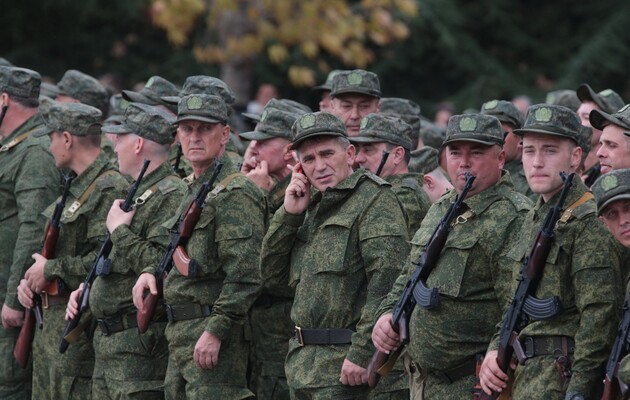The expert is convinced that 15-20% of mobilized Russians will die in the war against Ukraine, and up to 50% will be seriously wounded.

Russia is a backward country, and the mobilization of a large number of men will exacerbate her problems catastrophically. Two-thirds of Russians sent to war against Ukraine will die or be wounded.
American-Russian economist Oleg Itshoki said this in an interview for Der Spiegel. He pointed out that many people in Russia have been emotionally affected by the mobilization, but few of them realize the high probability that they will be killed or maimed if mobilized. 7 million men aged 20-30. If we exclude those who are not subject to mobilization for various reasons or are unfit for military service, a maximum of three million remains. Officially, Moscow plans to send another 300,000 people to the war, but the real plan remains a secret. There is speculation that the Kremlin actually wants mobilize a million soldiers. If the process lasts more than six months, the chances of each individual Russian getting into the war will be approximately 25%.
“We calculated that the expected losses among those mobilized in six months will be 60-70%. 15-20% will be killed, 45-50% – seriously injured. In our calculations, we used Western intelligence data on losses among Russian units in Ukraine,” the economist explained.
He reminded that the COVID-19 pandemic has already dealt a heavy demographic blow to Russia. But the consequences of the war will multiply the damage caused by the disease. The total mortality during the pandemic exceeded one million people in Russia. However, the victims of the coronavirus were mostly pensioners, people over 60 who had already raised children and did not work.
“In turn, the war will most likely lead to the death of up to 500,000 young people. These are people who still have their whole lives ahead of them, including their careers,” Itskhoky explained.
Read also: Problems with mobilization continue to fuel social division within the Russian Federation and criticism of the government – ISW
He pointed out that men between the ages of 20 and 35 fall under the mobilization. This is a generation that is already small. This age group is half as small as the group of 35-45-year-olds. This situation arose as a result of the colossal demographic crisis of the 1990s. According to the economist, in certain regions due to the mobilization of the population of this age group, it may decrease by 10%. And this is a “demographic catastrophe of national importance”.
Itzhoki also drew attention to the fact that since the beginning of the Russian invasion of Ukraine, approximately 450,000 young Russians have fled Russia. Now, due to mobilization, another 300,000 have been added to them. If we add to them another 300 thousand who are being mobilized, then the total number of young Russians who no longer work in the country will be close to a million. There is also another group of people who move from city to city to avoid mobilization. And they cannot work on a permanent basis. On the other hand, the number of able-bodied citizens of Russia is more than 70 million people. So we are talking about a loss of about 2% of the workforce.
The economist emphasizes that in the long run the consequences will be catastrophic. And it is very important what will happen in the coming months or next year. Will the mobilization continue? Will the war end? Itzhoki admitted that in the short term, mobilization may even improve Russia's economic performance, at least on paper. Because the salary in the army is sometimes higher than what many Russians can earn. So in economic statistics, mobilization may even seem like economic stimulation. In fact, this only demonstrates the problematic nature of GDP estimation. Because all this government spending is harmful, not productive.
Read also: In Alaska, men from Chukotka who escaped from mobilization were detained
Sanctions can somewhat ease the pressure on the market labor in Russia. Because because of them, many factories in the country have stopped, there are many unemployed personnel. And companies can easily find replacements for those workers who were sent to war. But on the other hand, they cannot know for sure whether these people will not be taken into the army. In such conditions, when it is not known for sure what the workforce will be, it is impossible to make long-term plans.
Related video
Itshoki also predicts that there will be two waves of outbreaks of violence in Russia. The first wave will occur when the soldiers return home from the war. And the second will break out much later, when the orphaned children who grew up without a father will grow up.



